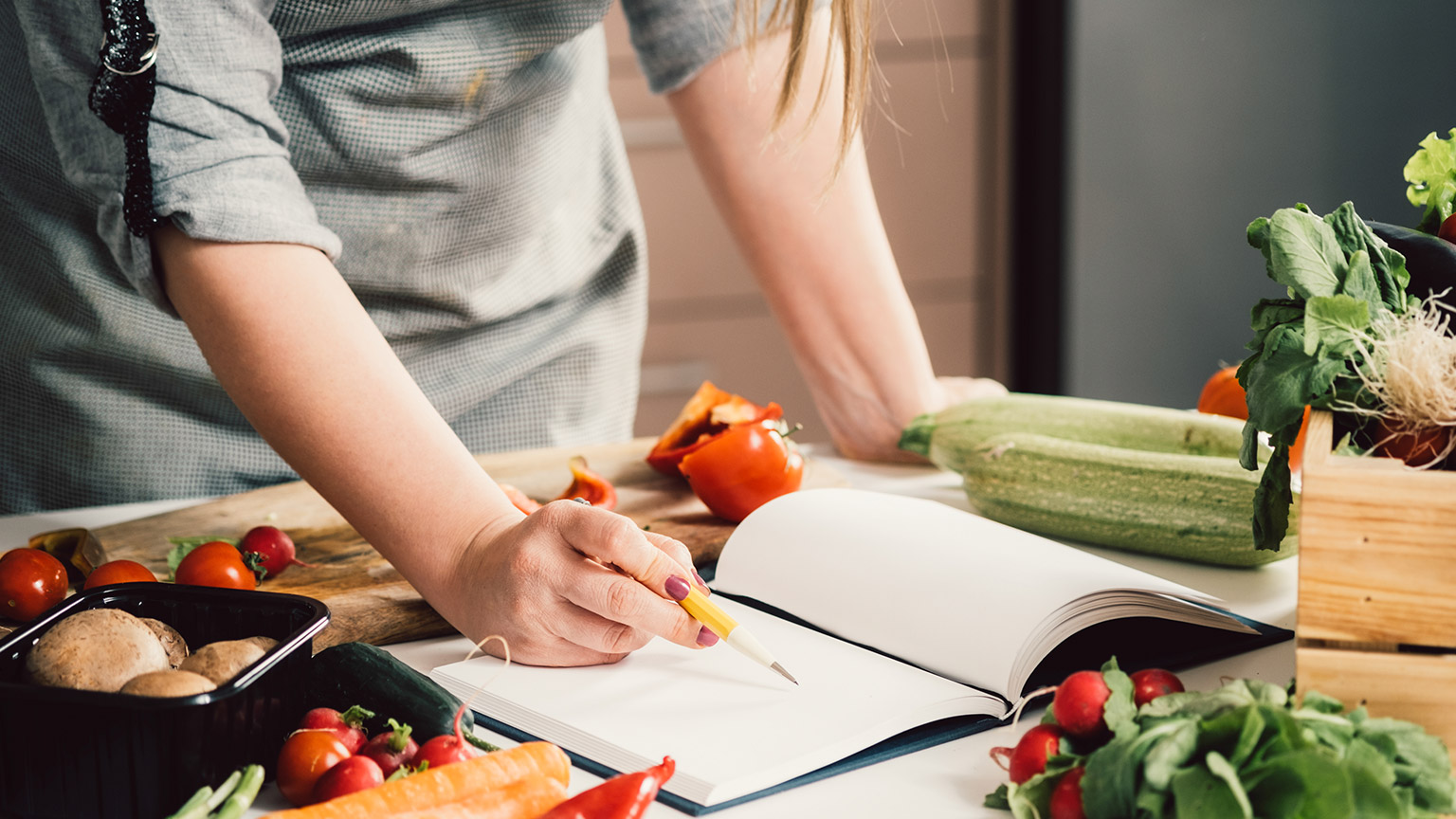Over this and the following modules of this course you will be coming across some new vocabulary. The glossary of terms will be a handy reminder of what some key cooking terms mean. Use these terms when talking to your foodie friends and you will sound like a pro!
| aerobic bacterium | bacterium which needs oxygen to survive |
| anaerobic bacterium | bacterium which does not need oxygen to survive |
| Bacillus cereus | aerobic bacterium which produces spores and toxin, commonly found in cereal foods such as rice |
| bacteria | micro-organisms which could cause food-borne illnesses |
| blanch | to pre-cook vegetables ready to reheat to serve (also see refresh) |
| brunoise | vegetables cut in very fine dice (1-3mm) |
| calibrate | to check and adjust equipment against a standard (e.g. adjusting oven controls so they match an oven thermometer or adjusting a digital food thermometer by testing in ice-water and boiling water |
| chiffonade | leafy vegetables or herbs finely shredded |
| Clostridium botulinum | anaerobic bacterium n the soil and which produces spores and toxin which can contaminate meat and vegetable products. Potentially fatal food poisoning can result. |
| Clostridium perfringens | anaerobic bacterium found in the intestines of humans and animals, and which produces spores and toxin. Commonly responsible for food poisoning in bulk-cooked, vacuum-packed and reheated foods. |
| concassé | roughly chopped, often used as a preparation for tomatoes |
| Escherichia coli (a.k.a. E. coli) | aerobic bacterium which produces spores and toxin found in the intestines of humans and animals. Commonly responsible for food poisoning through dairy products and undercooked meats. |
| freezer burn | dry patches on food which has been exposed to direct contact with air or ice whilst in a freezer |
| jardinière | vegetables cut into short sticks 3*3mm and 2.5cm long |
| julienne | vegetables cut into fine strips |
| Listeria monocytogenes | bacterium commonly associated with food poisoning in delicatessen items such as soft cheeses, pâté, salads and prepared seafood. It is commonly found in the environment. |
| macédoine | vegetables cut into small dice, approx. 5mm |
| mirepoix | vegetables roughly cut, often used to add flavour to stock |
| mise-en-place | preparation of ingredients and equipment ready for cooking or for service |
| nutrients | substances in food which are essential for health, providing energy and helping growth and bodily repair. Main nutrients include protein, fat, carbohydrate, vitamins and minerals |
| partie system | hierarchical kitchen organisation system which divides the kitchen into sections |
| paysanne | vegetables cut into 1-2mm shapes, peasant-style |
| pH | measure of acidity of alkalinity which ranges from 0 (acid) to 14 (alkaline). A measure of 7 is neutral. |
| protein | nutrient which is responsible for growth and repair of the body |
| reduce | to simmer a liquid to concentrate flavour and thicken, through the evaporation of water in the liquid. |
| refresh | cooling a cooked food item by running it under cold water to stop further cooking. Helps vegetables retain their colour after blanching. |
| salamander | overhead grill which cooks with heat from above |
| Salmonella | aerobic bacterium found in the gut of birds, animals and humans. Commonly responsible for food poisoning in undercooked poultry and seafood. |
| score | to make shallow cuts on the surface of foods like fish, meat and vegetables (Greig & Haddad, 2000) |
| shred | very thin slices of leafy vegetables or cooked meat |
| slice | to cut long strips or carve flat pieces from food |
| spider | a long-handled wire trellis which is used to put food into and remove food from deep containers of hot liquid (e.g. deep fryers or pots of boiling water for blanching) |
| spore | a bacterium's reproductive material which ensures its survival after cooking or dehydration has killed the normal bacterium cells and able to then recreate bacteria when the conditions are right. |
| Staphylococcus aureus | anaerobic bacterium commonly found on the skin, in the nose and in cuts on humans. A common cause of food poisoning through poor personal hygiene in food handlers. |
| stock | a cooking liquid often used as a base for soups or stews made by simmering meat or fish bones with aromatics or by simmering vegetables. |
| strain | to separate solids from a liquid by passing through a sieve |
| toxin | a naturally-occurring poison commonly produced by bacteria |
| vitamins | organic substances found in food which are essential for human development and health |
Module Linking
Main Topic Image

Is Study Guide?
Off
Is Assessment Consultation?
Off